30 Highest Rated Movies of all Time: Movies With 100% On Rotten Tomatoes
- Oops!Something went wrong.Please try again later.
- Oops!Something went wrong.Please try again later.
- Oops!Something went wrong.Please try again later.
- Oops!Something went wrong.Please try again later.

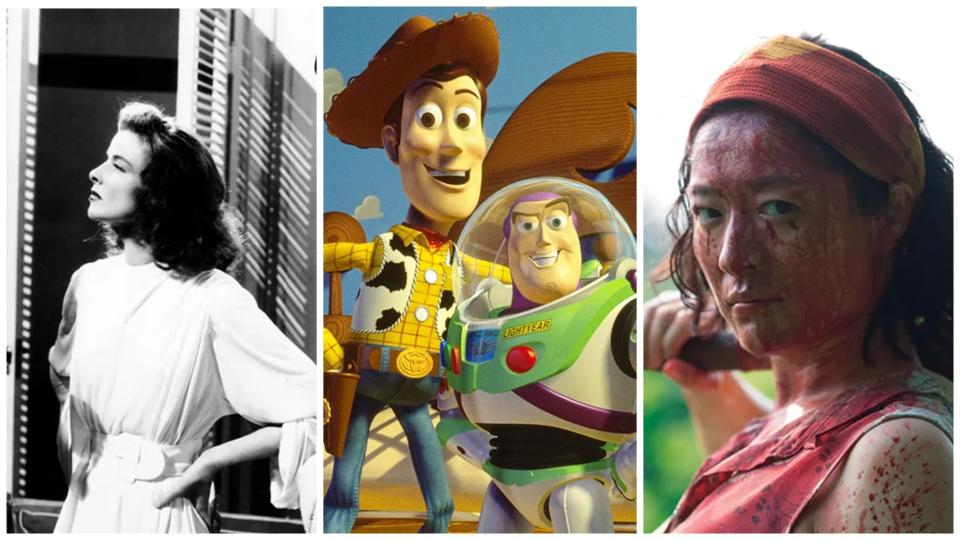
For 23 years, Rotten Tomatoes has been the go-to for those looking to get the scoop on what is new in movies. Aggregating opinions from fans and critics across the country, Rotten Tomatoes uses its “Tomatometer” system to calculate critical reception for any given film. If 60% of reviews are positive, the movie is given a “Fresh” status, but if positive reviews fall below that benchmark, it is deemed “Rotten.” A popular piece of media will typically fall between the 70-90% range, but rarely, a project will receive a 100% score. This means every last review from critics was positive.
More from Variety
Universal and Rotten Tomatoes Partner for New 'Seen on Screen' Podcast
How '20 Days in Mariupol' Became a Vital Firsthand Account of the War in Ukraine
Close to 480 films with at least 20 reviews have achieved a 100% score, with many coming very close. Greta Gerwig’s “Lady Bird” had a 100% rating with 196 positive reviews before a critic submitted a negative one, knocking it down to 99%. The immortal classic “Citizen Kane” had a 100% rating until a negative review from a 1941 issue of the Chicago Tribune was rediscovered, revoking its 100% status.
Here are Rotten Tomatoes’ highest-rated movies that have managed to maintain a 100% score and have the highest number of reviews.
The Philadelphia Story (1940)
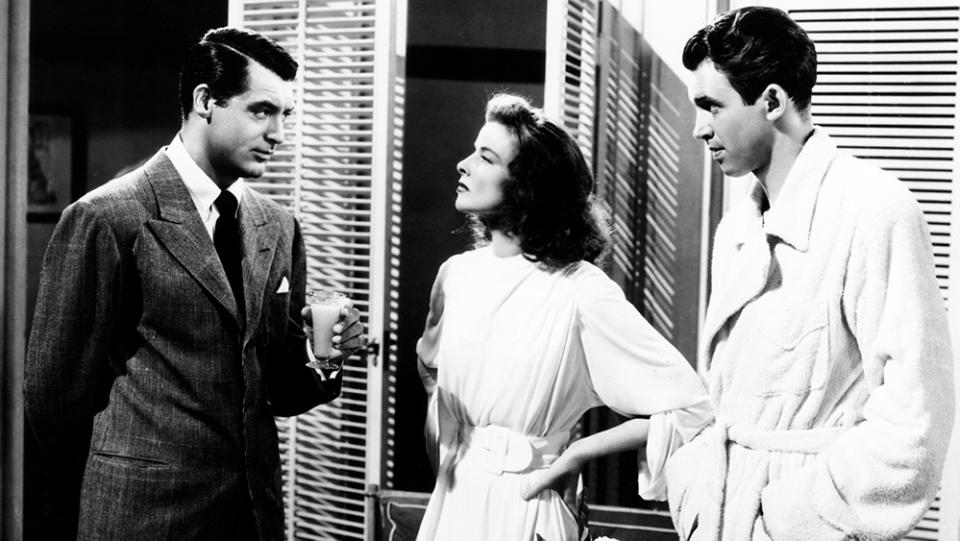
“The Philadelphia Story” is based on the 1939 Broadway play and follows a socialite whose wedding plans are complicated by the arrival of her ex-husband and a tabloid magazine journalist. Directed by George Cukor, he film stars Katharine Hepburn, Cary Grant, James Stewart and Ruth Hussey.
“It’s definitely not a celluloid adventure for wee lads and lassies and no doubt some of the faithful watchers-out for other people’s souls are going to have a word about that,” Variety‘s review said. “…All of which, in addition to a generous taste of socialite quaffing to excess and talk of virtue, easy and uneasy, makes “The Philadelphia Story” a picture every suburban mamma and poppa must see – after Junior and little Elsie Dinsmore are tucked away.”
Meet Me in St. Louis (1944)
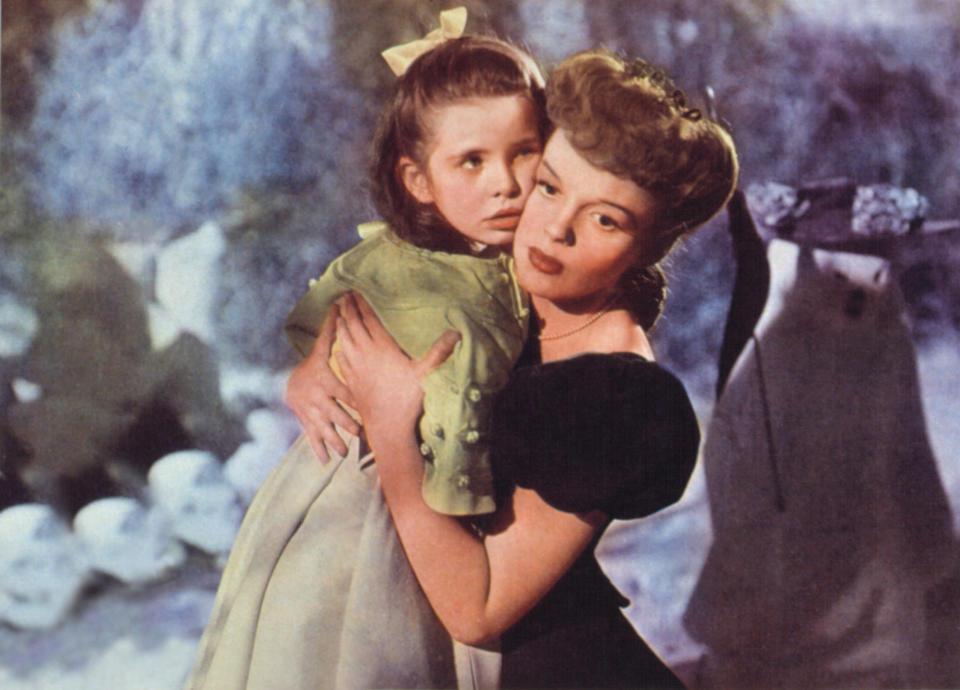
Christmas musical film “Meet Me in St. Louis” follows a year of the Smith family’s life in St. Louis leading up to the opening of the Louisiana Purchase Exposition, known as the St. Louis World’s Fair, in the spring of 1904. The film stars Judy Garland, Margaret O’Brien, Mary Astor, Lucille Bremer, Tom Drake, Leon Ames, Marjorie Main, June Lockhart and Joan Carroll and directed by Vincente Minnelli, who Garland later married.
“‘Meet Me in St. Louis’ is wholesome in story [from the book by Sally Benson], colorful both in background and its literal Technicolor, and as American as the World’s Series,” Variety‘s review said. “Garland achieves true stature with her deeply understanding performance, while her sisterly running-mate, Lucille Bremer, likewise makes excellent impact with a well-balanced performance.”
Singin’ in the Rain (1952)
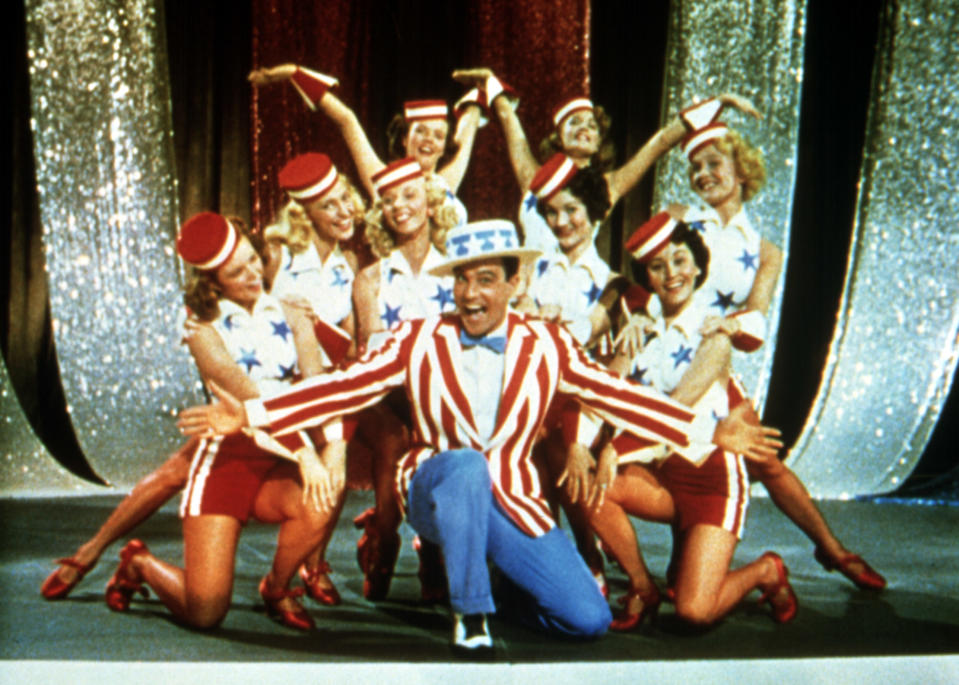
The musical romantic comedy “Singin’ In the Rain” follows three Hollywood stars in the late 1920s dealing with the transition from silent films to talkies. Starring Gene Kelly, Debbie Reynolds and Donald O’Connor, the movie was one of the first 25 films selected by the U.S. Library of Congress for preservation in the National Film Registry.
“‘Singin’ In the Rain’ is a fancy package of musical entertainment with wide appeal and bright grossing prospects,” Variety‘s review said. “Concocted by Arthur Freed with showmanship know-how, it glitters with color, talent and tunes, and an infectious air that will click with ticket buyers in all types of situations.”
Seven Samurai (1954)
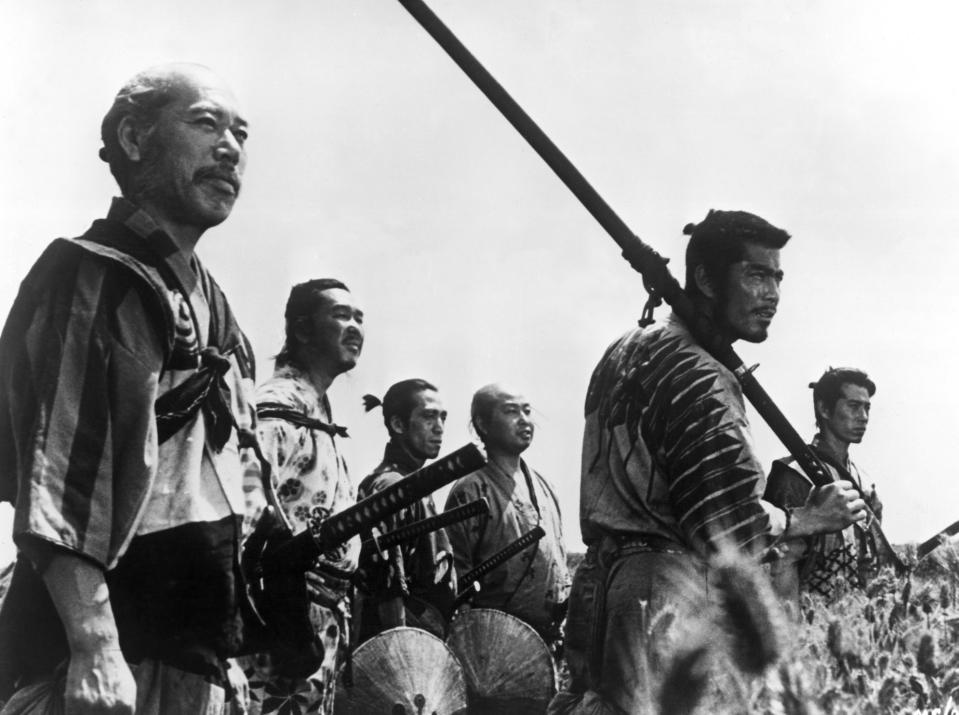
Epic samurai action film “Seven Samurai” follows the story of a village of farmers in 1586 who seek to hire samurai to protect their crops from thieves. The film was the most expensive movie made in Japan at the time.
“Director Akira Kurosawa has given this a virile mounting,” Variety‘s review said. “It is primarily a man’s film, with the brief romantic interludes also done with taste. Each character is firmly molded. Toshiro Mifune as the bold, hairbrained but courageous warrior weaves a colossal portrait. He dominates the picture although he has an extremely strong supporting cast.”
The Terminator (1984)

Sci-fi action film “The Terminator” follows a cyborg assassin (Arnold Schwarzenegger) sent back in time to kill Sarah Connor (Linda Hamilton), whose son will one day save mankind from extinction from artificial intelligence, Skynet. Co-written and directed by James Cameron and co-written and produced by Gale Anne Hurd, the film topped the U.S. box office for two weeks and grossed $78.3 million.
“‘The Terminator,’ which opens today at Loews State and other theaters, is a B-movie with flair. Much of it, as directed by James Cameron (‘Piranha II’), has suspense and personality, and only the obligatory mayhem becomes dull,” wrote Janet Maslin in a New York Times review. “There is far too much of the latter, in the form of car chases, messy shootouts and Mr. Schwarzenegger’s slamming brutally into anything that gets in his way. Far better are the scenes that follow Sarah (Linda Hamilton) from cheerful obliviousness to the grim knowledge that someone horrible is on her trail.”
Toy Story (1995)
Animated comedy film “Toy Story” follows the first adventures of cowboy doll Woody and space cadet action figure Buzz Lightyear. Owned by a boy named Andy, Woody and Buzz are a part of a group of toys that spring to life when humans aren’t around. Birthed after the success of Pixar’s short film “Tin Toy,” “Toy Story” was the first feature film from Pixar and the first entirely computer-animated feature film.
“To swipe Buzz’s motto –“To infinity and beyond”–“Toy Story” aims high to go where no animator has gone before,” wrote Leonard Klady in a 1995 Variety film review. “Fears at mission control of the whole effort crashing to Earth proved unwarranted; this is one entertainment that soars to new heights.”
Toy Story 2 (1999)
“Toy Story 2” continues Woody and Buzz Lightyear’s journey as the co-leaders of the toy group. When Woody is stolen by a toy collector, Buzz and the other toys must find set out to find him. During his time with the collector, Woody meets Jessie and Stinky Pete, other toys also based on characters from the TV show “Woody’s Roundup.” The animated film was originally supposed to be a direct-to-video sequel, but was upgraded to a theatrical release by Disney.
“In the realm of sequels, “Toy Story 2″ is to “Toy Story” what “The Empire Strikes Back” was to its predecessor, a richer, more satisfying film in every respect,” wrote former chief film critic Todd McCarthy in a 1999 Variety film review. “The comparison between these two franchises will be pursued no further, given their utter dissimilarity. But John Lasseter and his team, their confidence clearly bolstered by the massive success of their 1995 blockbuster, have conspired to vigorously push the new entry further with fresh characters, broadened scope, boisterous humor and, most of all, a gratifying emotional and thematic depth.”
Deliver Us From Evil (2006)
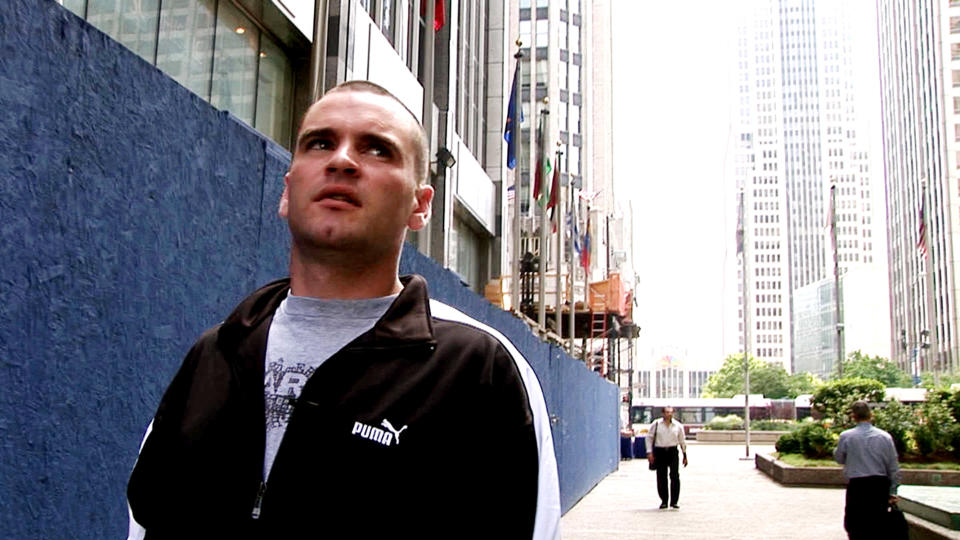
“Deliver Us From Evil” is a documentary that follows the case of convicted pedophile Oliver O’Grady, who molested approximately 25 children as a priest in northern California between the late 1970s through early 1990s. Filmmaker Amy Berg tracks O’Grady down to Ireland, where he was deported after being convicted of child molestation in 1993 and serving seven years in prison.
“Given how strong this kind of testimony is, “Deliver Us From Evil’s” decision to hype it more than it needs to be is unfortunate,” L.A. Times film critic Kenneth Turan said about the film in a 2006 review. “The film has a weakness for over-dramatization, for unsettling music and portentous close-ups of O’Grady’s hands and lips that are distracting and unnecessary.”
“There is nothing over-dramatic, however, about the deeply painful testimony of the adults who were victimized as children and their still traumatized parents,” he continued. “’He was the closest thing to God that we knew,’ one mother says. ‘I let the wolf in through the gate.’”
Taxi to the Dark Side (2007)

“Taxi to the Dark Side” is a documentary film directed by Alex Gibney about the 2002 killing of an Afghan taxi drive named Dilawar, who was beaten to death by American soldiers while being detained without a trial and interrogated at a black site, a detention center operated by a state where prisoners are incarcerated without due process or court order.
The film was a part of the “Why Democracy?” series, produced by The Why Foundation, which consisted of 10 documentary films examining democracy.
“Gibney (“Enron: The Smartest Guys in the Room”) has crafted more than just an important document of systemic abuse — he’s stripped the rhetoric from official doublespeak to expose a callous disregard for not only the Geneva Conventions but the vision of the Founding Fathers,” writes Jay Weissberg in a Variety film review. “All enemies in wartime are perceived as animals, but Gibney uncovers the ways the White House and Pentagon have encouraged torture while distancing themselves from responsibility.”
Man on Wire (2008)
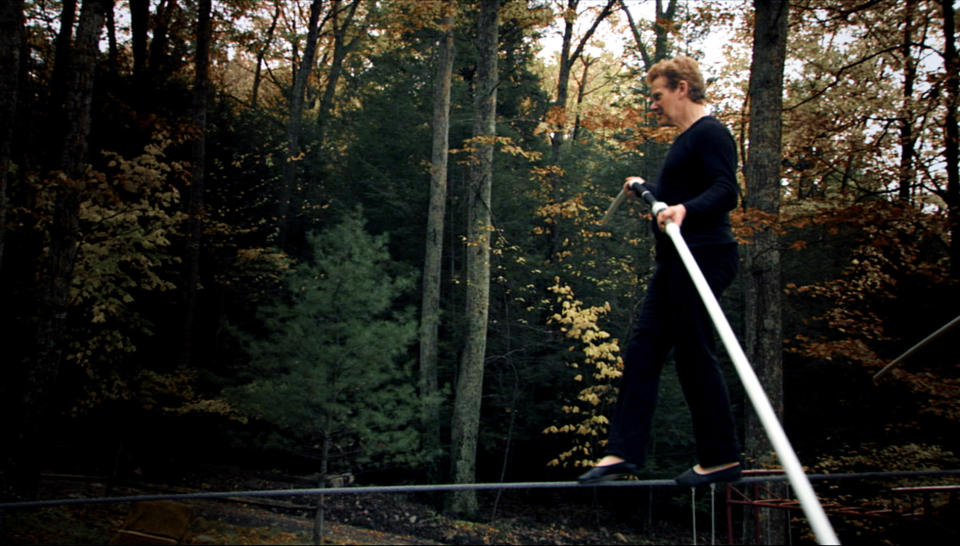
James Marsh’s “Man on Wire” documents the death-defining hire-wire stunts of Philippe Petit, who in 1974, performed a tightrope walk between the Twin Towers of the World Trade Center in New York City. “For contemporary audiences, Petit’s moment of mastery is inevitably shot through with a sense of loss; the following scenes, which reveal the band’s subsequent dissolution, reaffirm the bittersweet truth that triumph is but fleeting,” wrote Catherine Wheatley, who reviewed the film for Sight and Sound in 2010. “The film’s vision, though, is ultimately uplifting: relationships, like buildings, can collapse into rubble, but as [Annie Allix] tenderly puts it, sometimes ‘It is beautiful that way’.”
Poetry (2010)

Lee Chang-dong’s “Poetry” chronicles the life of Mija, a Korean grandmother who is simultaneously dealing with an early-onset Alzheimer’s diagnosis and the violent crime committed by her teenage grandson. “Now is the time to bestow on yourself the gift of one of the most, well, poetic films of 2010,” Lisa Kennedy wrote for the Denver Post in 2011. “And by ‘poetic,’ we mean rich with soulful pauses that are at once visual and aural and deeply observant of the dance of routine and quiet surprise.”
Waste Land (2010)
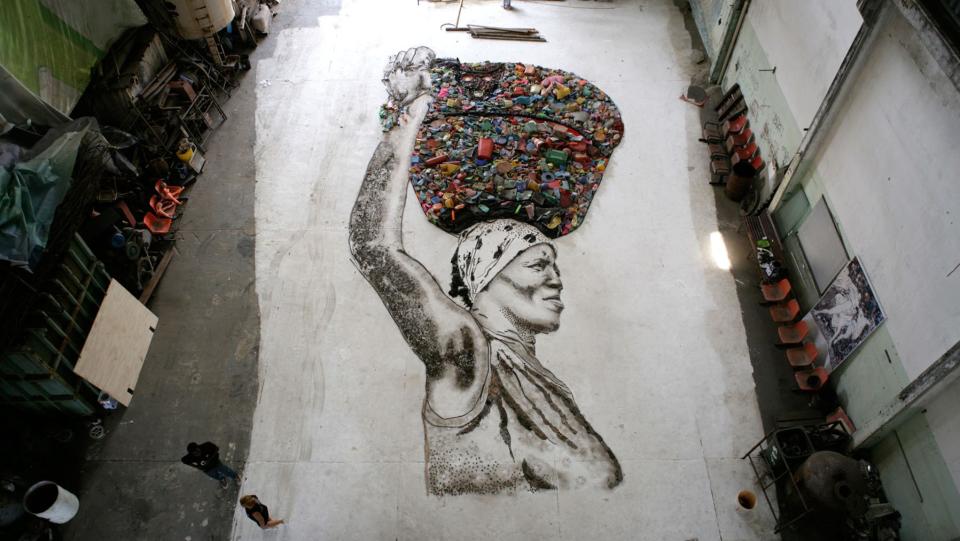
Lucy Walker’s “Waste Land” follows modern artist Vik Muniz to Jardim Gramacho, Brazil, the world’s largest landfill. There, he photographs the work of “catadores,” men and women who collect the refuse to recreate classical art. Legendary film critic Roger Ebert wrote for the Chicago Sun-Times in 2011, “I do not mean to make their lives seem easy or pleasant. It is miserable work, even after they grow accustomed to the smell. But it is useful work, and I have been thinking much about the happiness to be found by work that is honest and valuable.”
The Square (2013)
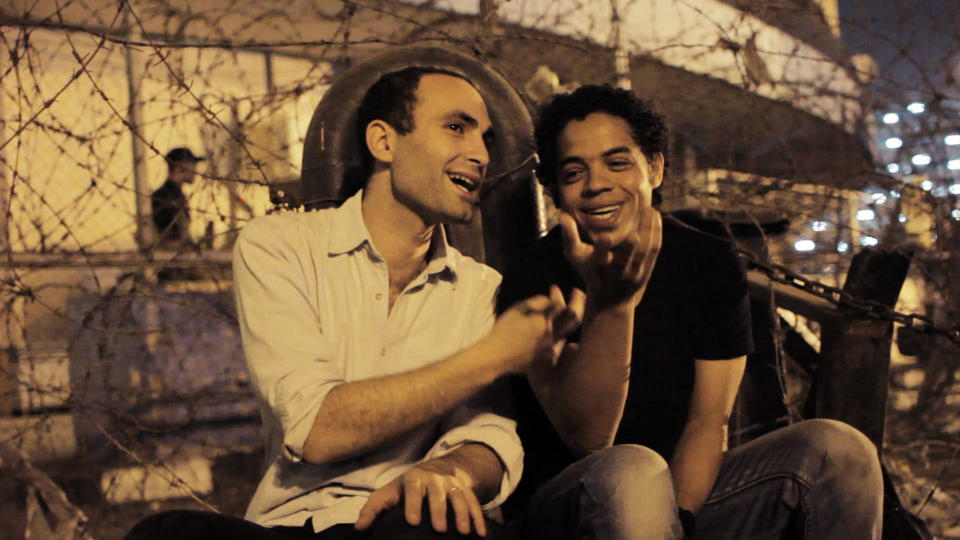
“The Square” is a documentary film by Jehane Noujaim, which follows Egyptian revolutionaries during the Egyptian Crisis, a period that started with the Egyptian Revolution of 2011 at Tahrir Square and lasted for three years. The film was nominated for the Academy Award for Best Documentary Feature and won three Emmys.
“Continuing to follow a group of activists as they rally against the undue powers of the Muslim Brotherhood and the Army, ‘The Square’ understands that the Revolution itself is a work in progress, and while its immediacy means it, too, will soon be superseded, it stands as a vigorous, useful account,” writes Jay Weissberg in a 2013 Variety film review.
Gloria (2013)

Sebastián Lelio’s “Gloria” follows the relationship between an aging divorce and an amusement park operator after their chance encounter at a singles disco. “With someone else in the central role, ‘Gloria’ might have been cloyingly sentimental or downright maudlin,” wrote Joe Morgenstern in his 2014 Wall St. Journal review. “With [Paulina García] on hand, it’s a mostly convincing celebration of unquenchable energy.”
The Tale of Princess Kaguya (2014)
Isao Takahata’s “The Tale of Princess Kaguya” tells the fable of a beautiful young woman who sends her suitors away on impossible tasks in hopes of avoiding a loveless marriage. In a 2015 review for Sight and Sound, Andrew Osmond wrote, “While the characters feel very simplified at times, there are scenes that put great weight on performance and subtle expressions, in a way that’s nearer to the classical Disney tradition than most Japanese animation.”
Seymour: An Introduction (2014)
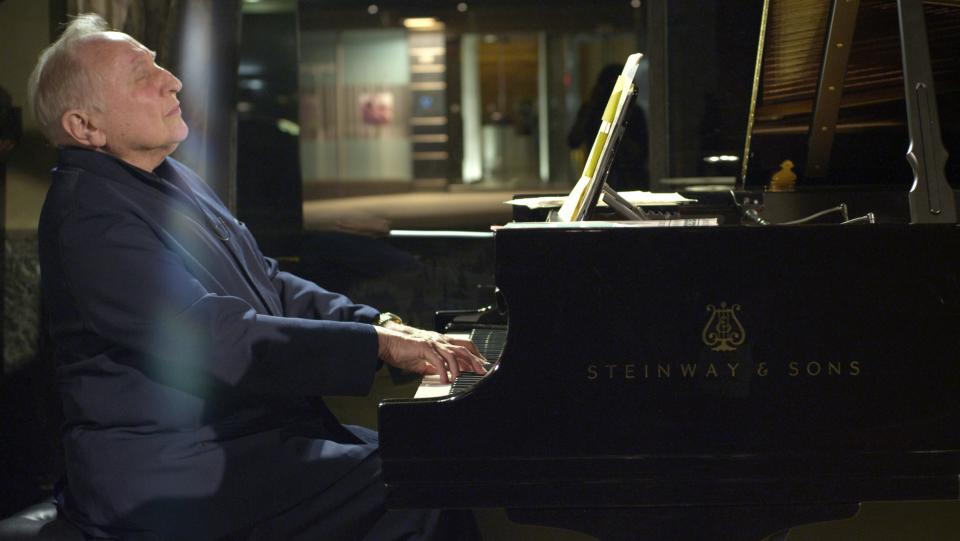
Ethan Hawke’s documentary “Seymour: An Introduction” chronicles the life of Seymour Bernstein, a concert pianist who, at age 50, gave up performing to become an educator and composer. “Coming off of his superb one-two performances for Richard Linklater in ‘Before Midnight’ and ‘Boyhood,’ Hawke continues to work at a creative high level,” wrote Bruce Ingram in his 2015 review for the Chicago Sun-Times. “He demonstrates a rapport and openness with his subject that proves exceptionally affecting.”
Gett: The Trial of Viviane Amsalem (2014)
From directors Ronit and Shlomi Elkabetz, “Gett: The Trial of Viviane Amsalem” follows an Israeli woman’s three-year battle to separate from her husband who refuses to dissolve their marriage. “Ultimately the movie is wearying, but then it’s likely supposed to be,” Tom Long wrote for Detroit News in 2015. “If Viviane’s going through the wringer, you’re going through the wringer too.”
One Cut of the Dead (2017)
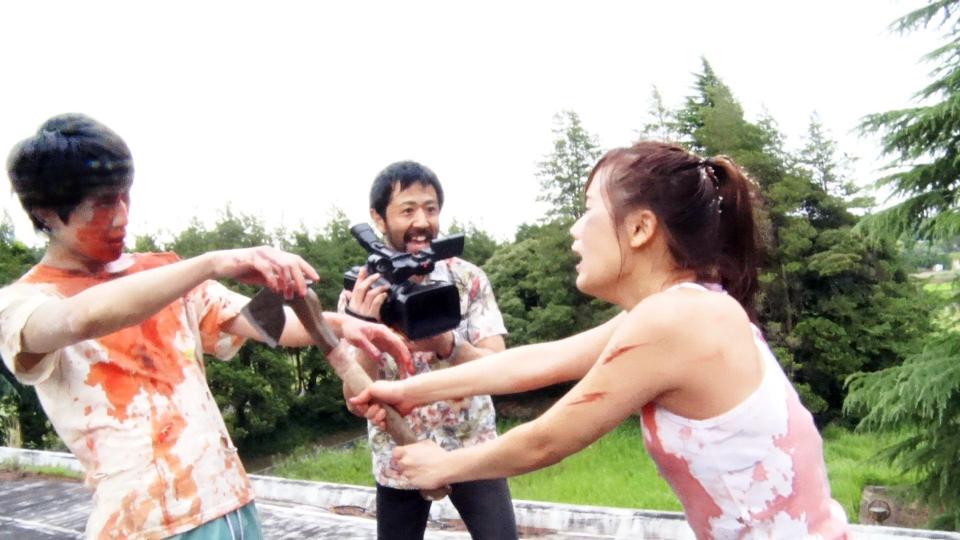
Shin’ichirô Ueda’s “One Cut of the Dead” follows Director Higurashi and his crew who attempt to shoot a zombie movie at an abandoned WWII Japanese facility. Things go wrong when they realize they are being attacked by real zombies. In his 2019 Los Angeles Times review, Carlos Aguilar called the film, “A master class in endless narrative inventiveness and an ode to the resourceful and collaborative spirit of hands-on filmmaking, ‘One Cut of the Dead’ amounts to an explosively hilarious rarity.”
Leave No Trace (2018)
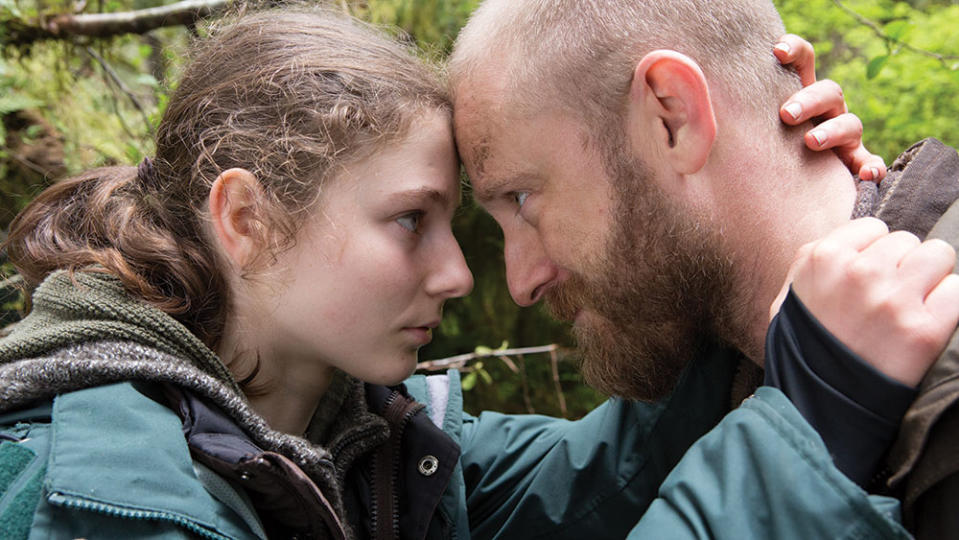
Debra Granik’s “Leave No Trace” follows a father and daughter hiding in the forests of Portland, Ore. When a misstep tips off their location to local authorities, they must escape and find a new place to call home. Peter Travers wrote in his 2018 Rolling Stone review, “Debra Granik’s drama about a damaged war vet (Ben Foster) living off the grid with his teen daughter, brilliantly played by breakout star Thomasin Harcourt McKenzie, is hypnotic, haunting and one of the year’s best.”
Summer 1993 (2018)
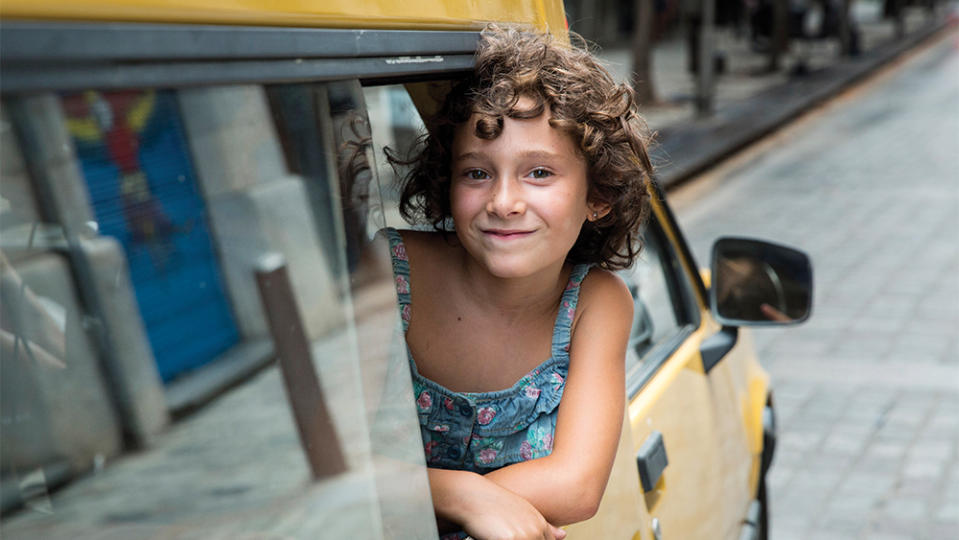
Carla Simón’s “Summer 1993” is told through the eyes of six-year-old Frida, who watches in silence as her recently deceased mother’s last possessions are packed into boxes. “Some creatures are able to grow new limbs,” wrote Joe Morgenstern in his 2018 Wall Street Journal review. “Frida, given more than half a chance after demanding it, achieves something no less remarkable. She grows new joy and hope.”
Minding the Gap (2018)
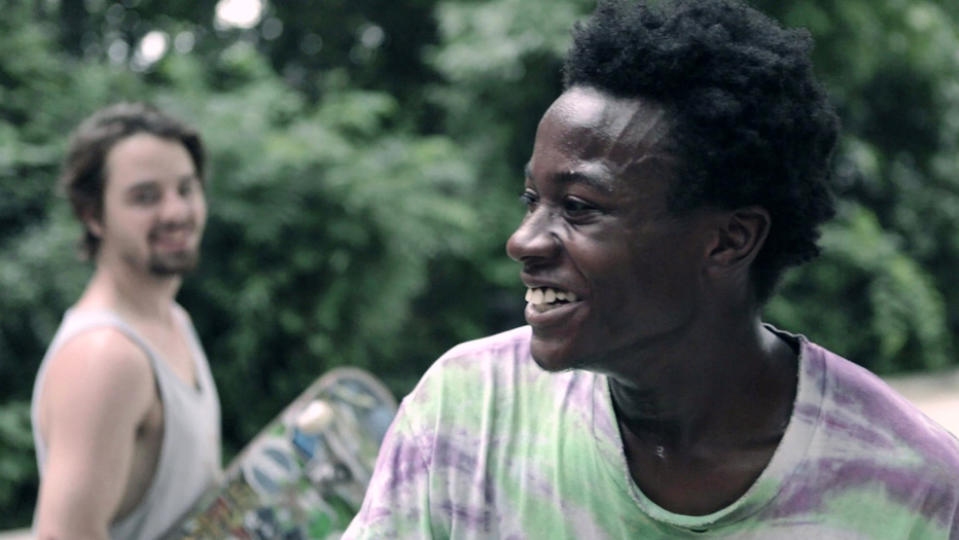
“Minding the Gap” follows the relationship of three boys who use skateboarding as an outlet to escape their hardships at home. “The film captures more than a decade long documentary footage showcasing their friendship. In some documentaries, the filmmakers attempt to make themselves invisible. Despite Liu’s camera-shyness, he never pretends to be anything other than a part of the story, hitting his subjects with direct, deeply personal questions,” wrote Peter Debruge, who reviewed the film for Variety in 2018.
Honeyland (2019)

“Honeyland” is a Macedonian documentary film that was directed by Tamara Kotevska and Ljubomir Stefanov. The movie follows a woman and her beekeeping traditions to cultivate honey in the mountains of North Macedonia. Guy Lodge from Variety describes “Honeyland” as it begins as a “calm, captured-in-amber character study, before stumbling upon another, more conflict-driven story altogether — as younger interlopers on the land threaten not just Hatidze’s solitude but her very livelihood with their newer, less nature-conscious farming methods,” he said.
Welcome to Chechnya (2020)
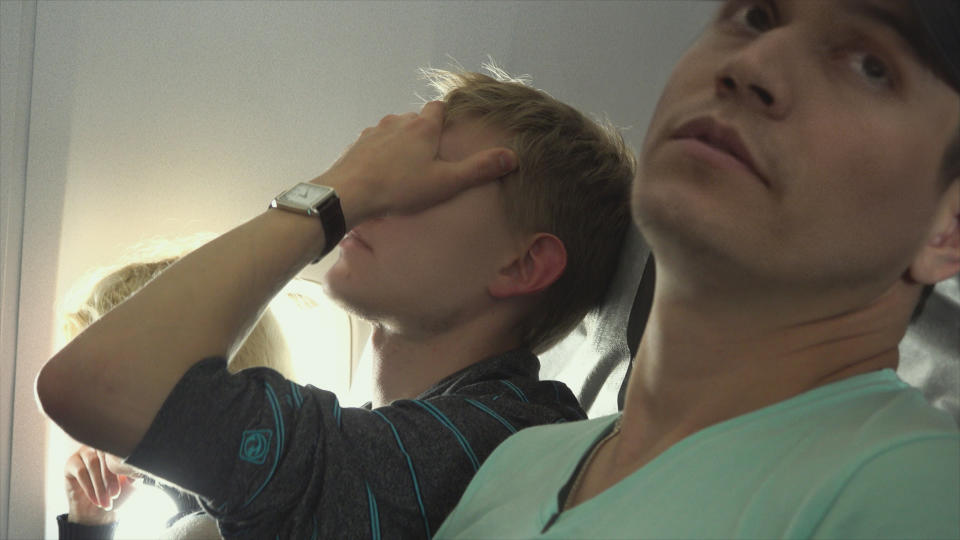
“Welcome to Chechnya” released in 2020, exposes Russian leader Ramzan Kadyrov and his government as they try to detain, torture and execute LGBTQ Chechens. “A vital, pulse-quickening new documentary from journalist-turned-filmmaker David France that urgently lifts the lid on one of the most horrifying humanitarian crises of present times: the state-sanctioned purge of LGBTQ people in the eponymous southern Russian republic,” wrote Guy Lodge from Variety in 2020.
Crip Camp (2020)
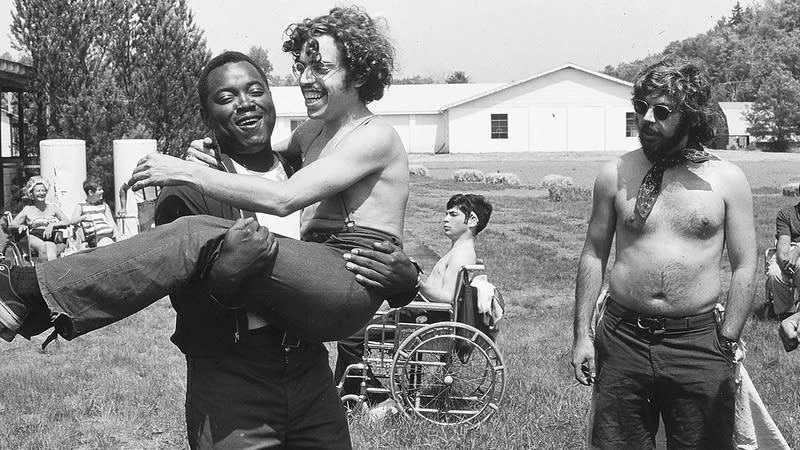
“Crip Camp” is based on Camp Jened, which was a summer camp for teens with disabilities in the ’70s that inspired real-life activism. The film eliminates stereotypes and challenges the way people think about disabilities. “It may be startling for those who haven’t spent time with people with cerebral palsy or polio to see how a paraplegic gets from his wheelchair into the pool,” wrote Peter Debruge for Variety in 2020. “On closer inspection, it becomes clear that these teenagers…are having the time of their lives.”
76 Days (2020)
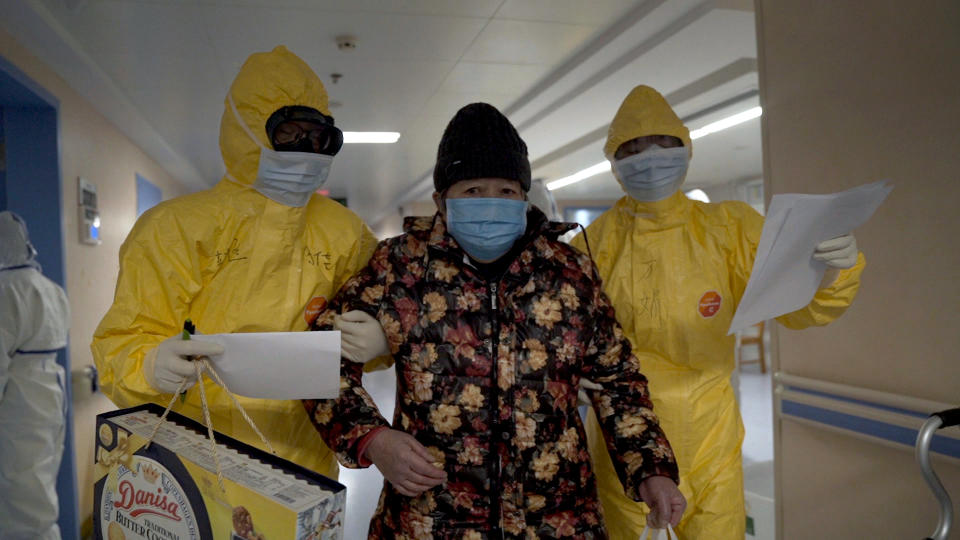
“76 Days” is a documentary released on Netflix in 2020 that shows the struggles of medical professionals and patients in Wuhan, China dealing with the COVID-19 pandemic. “As an artifact alone, the result is remarkable, capturing all the panic and pragmatism greeting a disaster before its entire global impact had been gauged, while strategies and protocols are adjusted on the hoof,” wrote Guy Lodge for Variety in 2020. “That it’s so artfully and elegantly observed, and packs such a candid wallop of feeling, atop its frontline urgency is testament to the grace and sensitivity of its directorial team, not just their timely savvy.”
His House (2020)
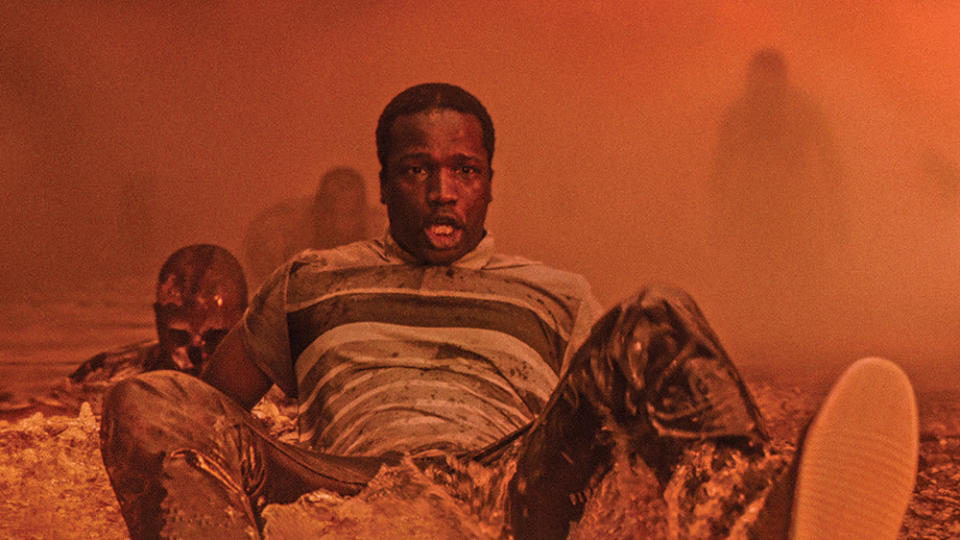
“His House” is a horror movie that initially released on Netflix and terrified audiences. The plot follows a refugee couple that try to create a new life for themselves in an English town by escaping South Sudan but find their new home is haunted. Jessica Kiang reviewed the film for Variety in 2020 and wrote “‘His House’ is at its most persuasively terrifying when it gets out of the house and into the existential terror of reality. Out there are aspects of the refugee experience that contain greater horrors and mortifications than all the blackening plaster, childish ghostly humming and skittering presences in the walls could ever hope to suggest.”
Quo Vadis, Aida? (2020)
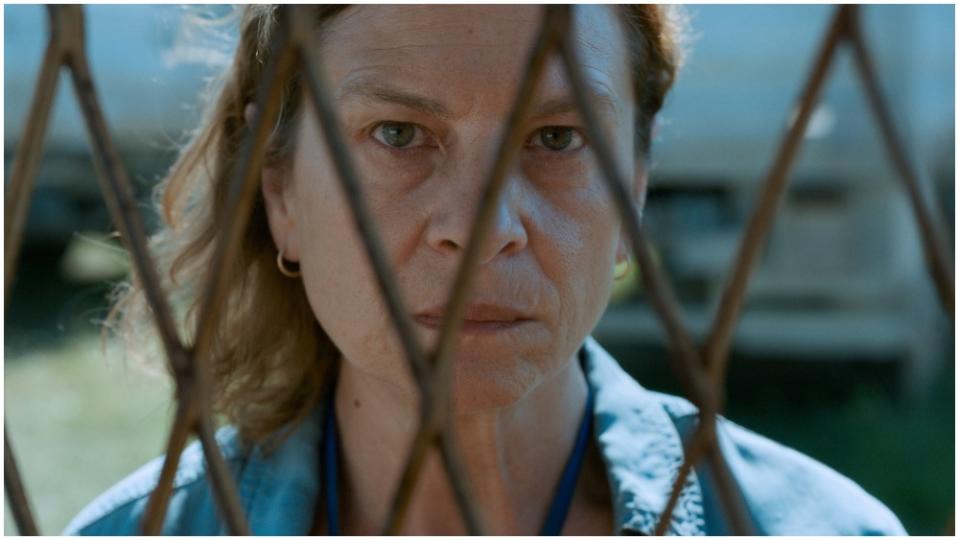
“Quo Vadis, Aida?” documents the journey of Aida, a translator for the U.N. in Srebrenica interpreting the crime taking place when the Serbian army takes over the Bosnian town. “This is not historical revisionism, if anything, ‘Quo Vadis, Aida?’ works to un-revise history, re-centering the victims’ plight as the eye of a storm of evils — not only the massacre itself, but the broader evils of institutional failure and international indifference,” wrote Jessica Kiang, who reviewed the film in 2020 for Variety.
Hive (2021)
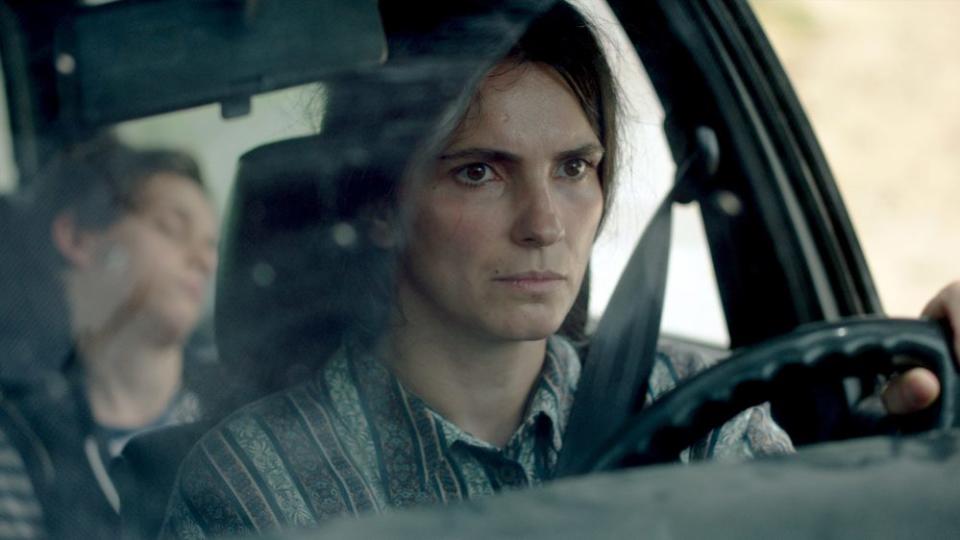
“Hive” tells the true story about a woman, Fahrije, who becomes an entrepreneur, after her husband goes missing during the Kosovo War. She sells her own red pepper ajvar and honey, and recruiting more women to join her. “Within the heavily patriarchal hierarchy of the country’s rural society, this places these maybe-widows in an impossible situation, especially when, like Fahrije, they have a family to care for,” writes Jessica Kiang for Variety. “They are expected to wait in continual expectation of their breadwinner-husbands’ return, subsisting on paltry welfare handouts, because to take a job or set up a business is looked on not only as a subversion of the natural order, but as a sign of disrespect to the husband and possibly loose morals.”
Descendant (2022)
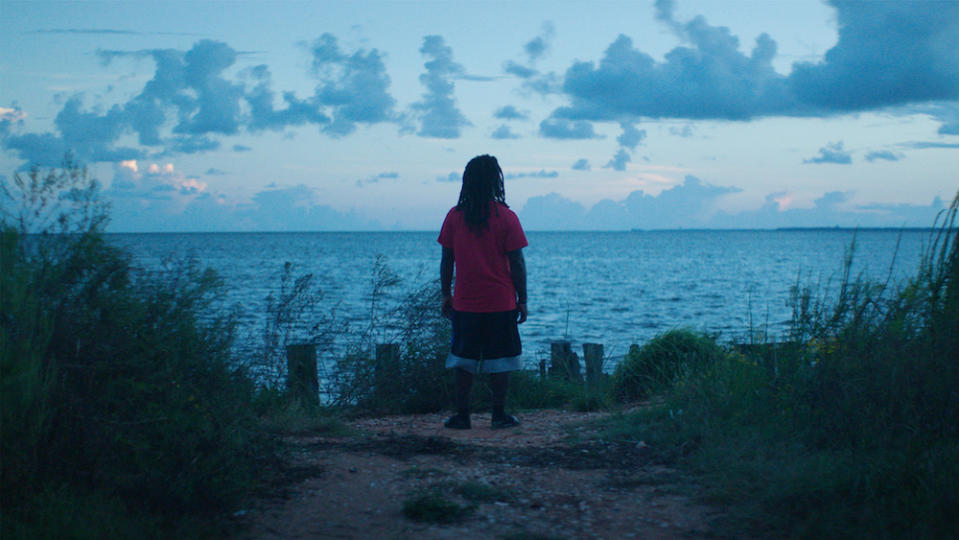
Netflix described its 2022 film, saying, “Descendants of the enslaved Africans on an illegal ship that arrived in Alabama in 1860 seek justice and healing when the craft’s remains are discovered.” “This past remains present, Brown shows, as activists explain how the land on which Africatown (formerly Magazine Point) was established once belonged to Meaher, who sold some of it to former slaves.,” wrote Peter Debruge for Variety. “Talk of racial injustice calls for nuance, and it’s impressive just how many facets of the conversation Brown is able to include in her film.”
20 Days in Mariupol (2023)
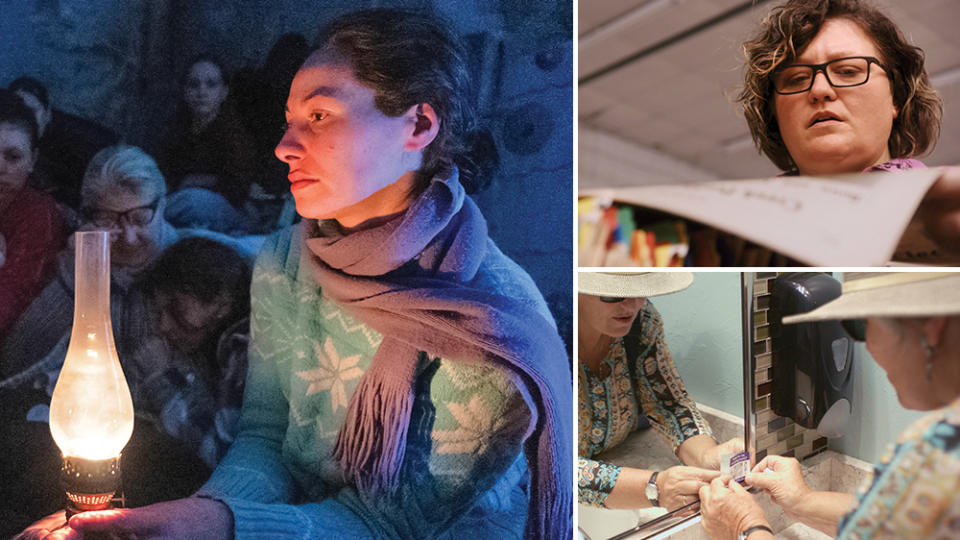
“20 Days in Mariupol” tells the story of a group of Ukrainian journalists who are trapped in Mariupol during the Russian invasion and struggle to continue documenting the war. The film is directed by Mstyslav Chernov, a Ukrainian director and it won the Academy Award for Best Documentary Feature Film in 2024. “Powerful as those glimpses were to international viewers, Chernov doesn’t spare his documentary more brutally sustained moments,” wrote Dennis Harvey for Variety. “There’s no political analysis or sermonizing here, just a punishingly up-close look at the toll of modern warfare on a population.”
Best of Variety

